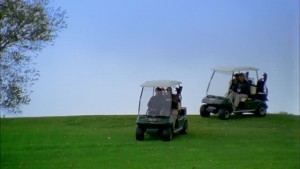Should You Brace, Wrap and Support?
The other day a client asked me what our thoughts were on lifting belts. And soon the conversation moved to the use of lifting straps, gloves and other gear people use when lifting.
There are a number of different tools and gear used when we step inside the gym to train. If training means some light stretching and going for a run this doesn't require a lot of special gear or equipment. However for those that are into Olympic or powerlifting there may be more tools used. Below is a brief description of some of the more common things lifters may use as well as our take on them.
Gloves, Chalk and Straps When you see someone get to a certain level of strength in deadlifting you'll typically see them fail in a particular area. And this tends to be the grip. I remember a colleague sharing that the grip serves as a governor for the body. In other words when the body has reached it's capacity strength-wise the nervous sends a message to release the grip and we let go of the weight. This is to protect the body so we don't do harm.
[caption id="attachment_5642" align="aligncenter" width="300"] The governor prevents the golf cart from going too fast downhill. Our hands serve as governors when we pick up heavy items. If the object is too heavy our grip releases.
To get around a weak or slippery grip you'll see people use a variety of tools including gloves, chalk, straps and towels. And not a tool but a common method to get around a weak grip is alternate the hands when doing a deadlift. In this situation one hand would be overhand and one would be underhand.
So what do we think of the use of each of these?
Well if you've trained with us for a while we don't use straps very often if ever. And that's because if the grip is weak we should look to strengthen it rather than hide the weakness with straps. Chalk really doesn't add any risk to lifting and can be a good idea. The only problem with chalk is that it can create a mess. To get around this there is now a product of liquid chalk which forms a sticky or tacky substance when applied to the hands.
If you are going to use straps maybe limit them to powerlifting and only to your heaviest set. I'd never recommend lifting straps when doing Olympic lifting. I remember seeing a video of a lifter breaking both arms when the bar came down on a failed attempt.
As for gloves this may help with a slippery grip and helps with overly sweaty hands if that's an issue. And some people don't want to develop callouses and gloves can protect the hands from developing them.
Wraps, Sleeves and Belts I don't use a lifting belt when I train. This is because:
- I'm not training with heavy enough loads
- I want to develop my intra-abdominal pressure (IAP)
The second part of my reasoning is that I want to have a strong and stable core. And I want to be fast. When you throw on a belt this is to provide support and protection to the low back. However my feeling is that if the belt is doing the work of providing stability to the low back than it's one less job for my core to do. And I want a stronger not a weaker core.
As for the point of getting faster, there is a point where more strength does add a benefit to speed. And we can become slower with increased strength. This isn't the case for most people but again I'm speaking about my personal goals and not what would apply to 99% of the population. I know a number of colleagues that train sub 10 second sprinters i.e. Olympic 100 m final guys, and they don't have their sprinters lift at all.
But this isn't a post about sprinting or speed but about lifting tools. To be fair, if I entered a powerlifting contest I would wear gear including a belt as my goal in competition is about moving the heaviest weight from A-->B and I'm less concerned about core or speed development at the time.
Mouth Guard Once in a while you may see a lifter use a mouth guard. This has less to do with providing protection and more to do with being able to generate the highest force possible. The protective aspect would come from potentially biting the tongue. Things have really gone sideways if we need a mouth guard to protect the teeth during a lift.
Going forward with your training look to limit the tools that mask a weak grip. If you are going to use some of the gear mentioned above save it for your heaviest set or competition.
When you subscribe to the blog, we will send you an e-mail when there are new updates on the site so you wouldn't miss them.

Comments